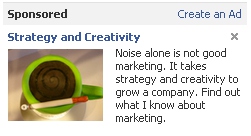
Have you ever seen one of those slick sales pitches that seem to suck the money right out of your pocket? You know, like those vacuum cleaner demonstrations where they show you how their vacuum will pick up nails and screws, and even lift a bowling ball with its superior suction.
These are the sort of clever sales tactics where they show that even after all those nails and screws, it will still pick up the dirt that your tired old machine leaves behind. The dirty “proof” is right there in front of you, and you don’t really want your home to be that filthy, do you?
With all the filth of nasty bacteria and dust mites, it is only a matter of time until your kids get asthma, and the doctor bills will cost you a squillion times what their vacuum cleaner will cost. So, really, they are not selling you a vacuum cleaner. They are saving your kids’ lives, and keeping you from going bankrupt with all the medical bills.
This is really not a laughing matter, and it all goes to prove why you need the Sucker Sucker 4000! The massive power of the Sucker Sucker 4000 will suck up dirt better than the competition, but at a fraction of the cost. When you add in those medical bills, it actually pays you to buy this machine!
Plus, every spouse is more amorous when their back is not hurting. Think about how many times your wife complains about hauling that big old heavy vacuum up and down the stairs. She won’t be complaining of a backache with the Sucker Sucker 4000! You like sex, don’t you?
Guess what! Your tired old vacuum will do most of that stuff, too! It is a sales pitch, and it is not designed to save your kids’ lives. It is designed to get the money out of your pocket and into theirs.
The Tragedy of Social Media Pitches
There is no disputing the value of good marketing. Marketing is where the sales come from. Marketing builds companies, and puts the money in their bank account.
Marketing has changed, and many companies struggle to adapt. They are trying so hard to hold onto yesterday’s values, that their marketing sucks as strong as that vacuum cleaner. They are still trying to sustain the lies and deception of old-school pitches, and excessively boastful statements, while the market passes them by. The smart ones figured out that they just needed to provide the best offerings they can, and be honest, and their fans will do the boasting for them.

Just look at my industry for an example. How many people in the SEO (search engine optimization) industry do you think have built up sales with sleazy tactics? I see it all the time, and when customers find out the SEO is a fraud, and their tactics are more harmful than good, they change their company name and go into hiding like Osama bin Laden. It happens a lot more than you may think. It is like those traveling magazine salesmen. By the time you realize you never got the magazines you paid for, they are in another town, scamming another would-be reader.
What about social media marketing? Have you happened to notice the massive number of people who became “social media experts” in the last few years? How did that happen? They were not trained in marketing, or have decades of experience, but now they know a bunch of buzz words and how to suck up bowling balls with a vacuum cleaner.
It happened because people really want to have hope, and that is the big con job of the majority of social media marketing people. They sell ridiculous hopes that they will save companies from destruction by setting them up on Facebook and Twitter. As with other industries, people are figuring things out the hard way, and now they are starting to shop more carefully. Many of the “social media experts” are not so expert once you lift the curtain and turn on the lights.
Some Truth About a Sales Pitch
The truth about a sales pitch is that they are designed to bring you to an emotional peak, and then close the sale while you are still excited about the product or service. The numbers may vary by industry, but there is generally less than one percent of people who will come back for the purchase if the sale is not closed immediately at the conclusion of the presentation.
That is the old school pitch, and it is very hard for companies to let go of that power, and to work hard enough to earn a customer’s business based on truth and trust.

How this is applied to online marketing, and especially in social media marketing efforts, is that the buyer has a lot more control of the sales pitch. The process is more long-sighted, and it allows customers to make better decisions. It also requires companies to work harder to avoid “no” until they get the “yes” answer they wanted.
Along with a social media pitch, customers will Google your name, check for reviews, and see if your equivalent to the Sucker Sucker 4000 is what you claim that it is. If it really is, they may decide to watch you and think about your product or service for a while, until they are ready to buy. That scares the heck out of a lot of companies, because it is so foreign.
The good news about the sales that come from social media sources is that the customer is often far more aware of the offering, and will be a better customer because of their higher level of confidence.
If you are doing your job right, the customer will pay attention. They will bookmark your website, subscribe to your mailing list, and they will think about the wonderful day when they will own what you sell. Until that time, it is your job to make it easier for them to remember you, and how much better they will feel once they make their purchasing decision.
Once they are your customer, it is your duty to be sure they love your brand enough to tell their friends, and give you positive reviews across the Internet. When this happens, the sales cycle comes full-circle, and you are on a path to growth.
Some Options for Your Sales Pitch
The way I see it is that you have some options to consider. There are many degrees of how much you will incorporate these extremes, and finding your perfect balance is important.
Option One: You could just keep sucking up nails and looking for more people to present your pitch to. You can keep dismissing the non-buyers as idiots and child abusers for leaving their home so filthy by not buying your Sucker Sucker 4000.
Option Two: Another option is that you show more longevity, take a long-term approach, and help others to do the selling for you. You can give the real facts, keep the hype a bit less creepy, and cultivate a customer base who love you for your integrity and fine offerings.
Option One focuses on short-term drama and urgency, while Option Two focuses on long term success and building trust in a market segment. There really is a good balance between short-term and long-term objectives for any company.
Long-term social media objectives often come with more pain in the short-term, and short-term objectives often come with more pain in the long-term. Sometimes success is a matter of determining your tolerance to pain.
Oh, and by the way … did you Google me, check my background, and subscribe to my blog, yet? Come back any time to read some more. I’ll be here when you are ready to do business. 😉
Photo Credits:
Arco Wand Vacuum Cleaner by Marxchivist via Flickr
23.4.2009 by Miika Niemelä via Flickr
Hey Dorks, Who Is Your King Now??? by Rob Boudon via Flickr
Podcast: Play in new window | Download








